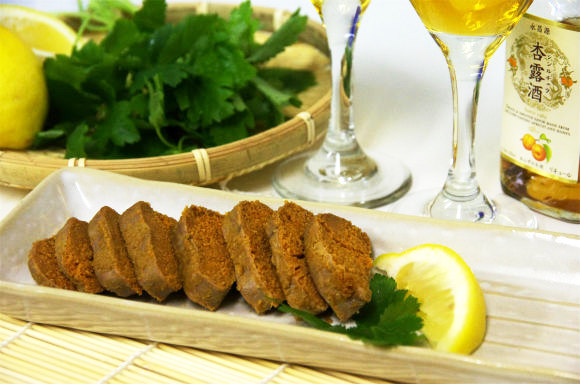
You may think it’s crazy to voluntarily eat poisonous fish, but in the case of pufferfish, or “fugu” in Japanese, it’s something the Japanese have been doing for a long time. We understand how the idea of eating a potentially deadly poisonous fish could be off-putting to some, but most Japanese people wouldn’t think twice about going to a restaurant and having pufferfish; in fact most of us would welcome it as a treat, as a full-course fugu meal usually doesn’t come cheap. Well, this time, we have a story from one of the reporters at the Pouch website about an unusual way to have pufferfish, and this is definitely a recipe you won’t be able to recreate at home!
Typically, thinly sliced sashimi or a hot pot (“fugu-nabe“) in which pieces of fugu are cooked in a pot of boiling water with a variety of vegetables, would be some of the standard ways to eat fugu in Japan. In this instance, however, the reporter had the opportunity to mail order a unique dish of fugu ovaries, and she shares her experience with us. The following is her account:
[My Encouter with Mail Order Fugu Ovaries]
Apart from the Chinese, the Japanese may well be one of the people most obsessed with food in the world. Both the Chinese and Japanese are known for turning the unlikeliest of ingredients into food (provided they actually taste good). I mean,who else in the world other than the Japanese would try to eat fish that is known to be deadly poisonous? If you stop and think about it, it’s amazing that we eat fugu at all, but fugu ovaries? Talk about going far for an eating experience!
So, are the ovaries in pufferfish not poisonous? Actually, they are – they contain plenty of tetrodotoxin, which means that if you eat the ovaries without properly preparing them, you are likely to meet a highly undesirable demise involving your muscles becoming paralyzed and then becoming unable to breathe, all the while staying fully conscious. Hence, the comment about not being able to recreate this dish at home. (Again, DO NOT think about making anything resembling this dish on your own.)
So, you have to be wondering, how do they get rid of the poison from the ovaries? The answer is, they immerse the ovaries in rice bran paste or salt and leave them sitting for a few years, and somehow enzymes work to break down the poison. The actual science behind the process is not fully known. (Okay, this is where you place absolute trust in the chef.)
This particular dish has actually been consumed locally for hundreds of years since the Edo Period, and currently, only specifically licensed manufacturers in select areas, mainly Hakusan and Kanazawa City in Ishikawa Prefecture, are allowed to make the product. It’s quite possible that many unfortunate souls fell victim to the poison before the proper preparation technique was established. Now, people can of course consume the dish without fear of being poisoned, but at one point the Japanese government apparently tried to ban the making of the product, because the scientific process which removes the poison was not absolutely clear. So, in fact, the manufacturers have had to struggle to continue creating this delicacy.
As it so happens, I had previously sampled a similar dish of fugu ovaries pickled in rice bran paste (“nuka-zuke“) when visiting Sado Island in Niigata Prefecture and had become a big fan of the dish. I was wishing I could have fugu ovaries again, when I found out that they were available by mail-order. I only wish I had found out sooner!
▼The fugu ovaries the reporter previously had in Niigata
So, to get my hands on some fugu ovaries, I ordered a product called “Fuguko Nuka-zuke” (Pufferfish Eggs Pickled in Rice Bran Paste) from the shop “Arayo Shoten” based in Mikawa of Hakusan City in Ishikawa Prefecture. Being such a unique product made only by select manufacturers, I was surprised that it was available at a relatively reasonable price of 840 yen ($10.50).
▼The Mail Order Fugu Ovaries from Ishikawa Prefecture 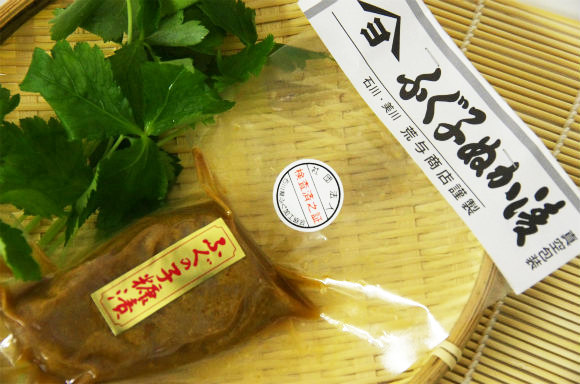
Now, for the highly anticipated tasting of the pufferfish nuka-zuke. These ovaries had been pickled for over 2 years, so not surprisingly, they were quite salty, but the rich flavor of the eggs and the rice bran gradually spread in my mouth and umm… the ovaries were tasty, especially when eaten with freshly cooked white rice! If I was feeling 60% happy before eating the ovaries and rice, I have to say that my level of happiness rose to about 80% afterwards!
And since we girls here at Pouch enjoy a drink or two (or more), we naturally had to try the nuka-zuke with 4 different types of alcoholic drinks. The first drink was a sweet Chinese apricot wine (杏露酒) which we drank with ice in a wine glass – elegant and a perfect drink to reward yourself after a hard day’s work. Then we had some of the nuka-zuke ovaries. Yum, it tastes even better with a squeeze of lemon juice. A sip of sweet apricot wine and a bite of the salty ovaries – wow, they go together so perfectly, we could practically continue doing this forever! Now my happiness level was up to 100%!
▼We tried the fugu ovaries with chinese plum wine.
▼Excellent with a squeeze of lemon juice!
Next, we selected some Japanese sake. We chose 2 brands of sake, the dry-type “Kikusui” (Kikusui no Karakuchi) from Niigata Prefecture where I first had fugu ovaries and “Kaikyo”from Shimonoseki in Yamaguchi prefecture, an area well-known for excellent pufferfish. Considering their area of production, both sakes should go extremely well with fugu!
The dry-type Kikusui had a refreshing taste (which is considered typical of sake from Niigata) that cleansed the salty aftertaste of the nuka-zuke. The Kaikyo also did not disappoint, mellowing the taste of the fugu ovaries with its distinct flavor. Both provided a delightful experience.
▼We tried the fugu with 2 different ypes of sake.
We further arranged the fugu ovaries by having them as a kind of “ochazuke“, which involved placing the fugu on top of rice along with some mitsuba (trefoli plant) and shredded pickled plum, and pouring hot water over the rice and ingredients. (You usually pour Japanese tea over the rice to make ochazuke, but you can also use plain hot water instead, which we did in this instance.) I have to say the ochazuke was incredibly delicious! The flavor of the fugu ovaries mixed with the hot water created an excellent soup and provided just the right amount of saltiness. The pickled plum also added another layer of richness to the taste. This is what I would call heavenly!
▼Making ochazuke with the pickled fugu ovaries
Okay, we thoroughly enjoyed the fugu, but we still wanted to have something more to drink. So, we moved on from sake to white wine – we chose a round Italian wine, the Pasqua Bianco del Veneto. As we imagined, the wine also complemented the nuka-zuke exceedingly well. It was a delightful mix of Japanese and Western flavors. The wine was not too heavy and was the perfect drink to finish off the evening.
▼Fugu with Italian white wine
In the end, we may have had a little too much to drink, but the whole experience was absolute bliss! Needless to say, we girls at Pouch fully intend to continue having more such parties with tasty food and good sake and wine (no matter how much we may regret it in the morning). If you’re willing to brave it, the pickled pufferfish ovaries are a dish we certainly recommend!
Origninal article and photos by: Rinko Meru
▼Some more photos from our memorable night of feasting
[ Read in Japanese ]

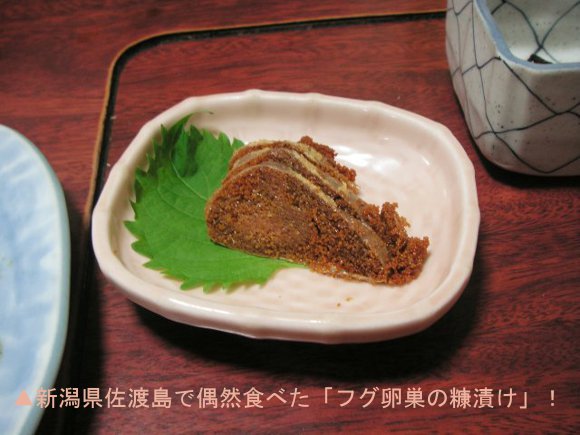




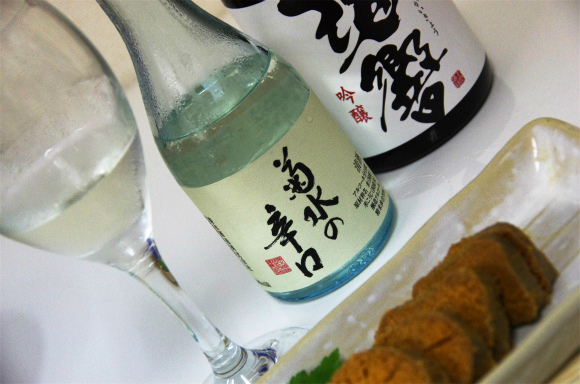
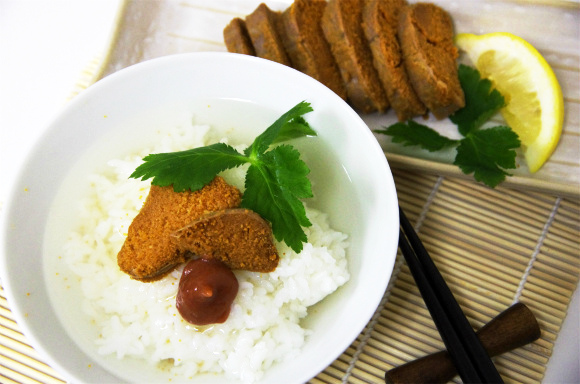
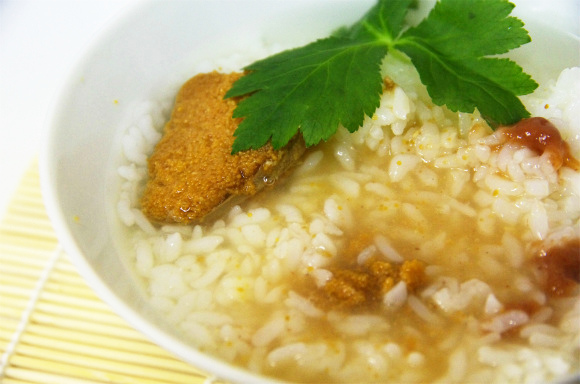
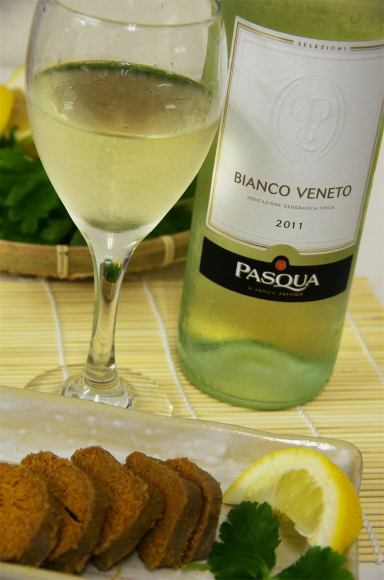
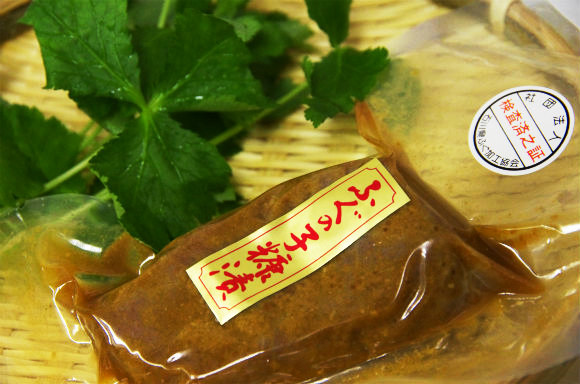
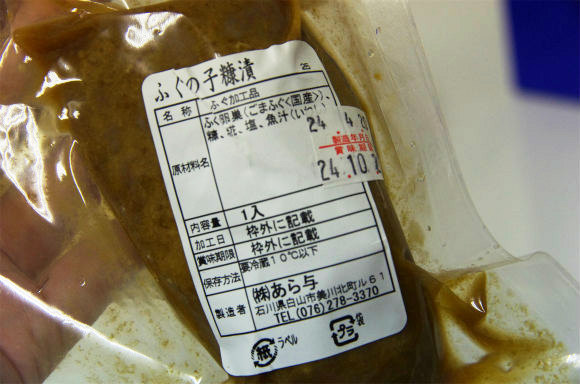
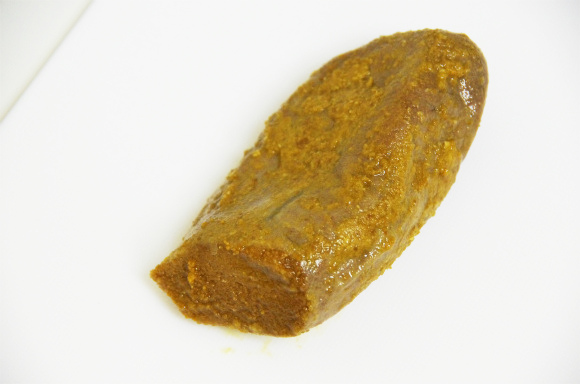
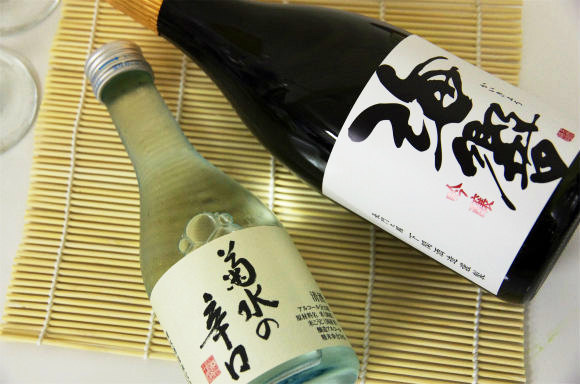
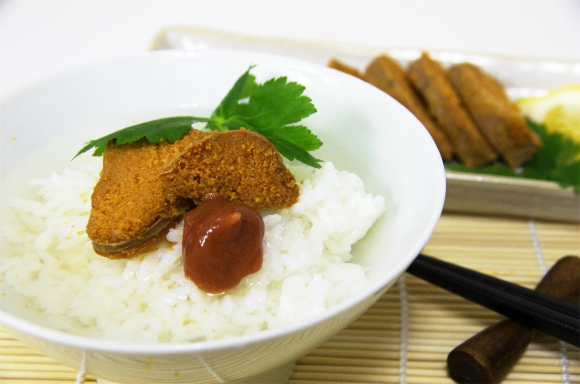
 What happens if you feed pufferfish poison to pufferfish? Japanese scientists trying to find out
What happens if you feed pufferfish poison to pufferfish? Japanese scientists trying to find out Aichi supermarket caught selling poisonous puffer fish livers, “been selling it for decades”
Aichi supermarket caught selling poisonous puffer fish livers, “been selling it for decades” Must try before you die: Fugu and shiokara from Japan make bizarre food “bucket list”
Must try before you die: Fugu and shiokara from Japan make bizarre food “bucket list” 10-year-old Japanese girl is youngest person ever certified to prepare deadly poisonous blowfish
10-year-old Japanese girl is youngest person ever certified to prepare deadly poisonous blowfish We eat fugu pufferfish semen at a Japanese restaurant in Tokyo
We eat fugu pufferfish semen at a Japanese restaurant in Tokyo Japanese beef bowl chain Sukiya’s 2026 Smile Box lucky bag basically pays for itself
Japanese beef bowl chain Sukiya’s 2026 Smile Box lucky bag basically pays for itself Village Vanguard’s most expensive Black Lucky Bag sets an ominous tone for 2026
Village Vanguard’s most expensive Black Lucky Bag sets an ominous tone for 2026 Survey finds more than 70 percent of Japanese children have an online friend
Survey finds more than 70 percent of Japanese children have an online friend Kyoto may be getting more modern, tall buildings as city relaxes development limits
Kyoto may be getting more modern, tall buildings as city relaxes development limits Japanese thug wear from Birth Japan perfect for those breaking bad next year
Japanese thug wear from Birth Japan perfect for those breaking bad next year Sega’s Like a Dragon yakuza teaches “useless” English, let’s use it to learn some useful Japanese
Sega’s Like a Dragon yakuza teaches “useless” English, let’s use it to learn some useful Japanese Beardless Hayao Miyazaki has on-brand answer to what he likes about The Boy and the Heron【Video】
Beardless Hayao Miyazaki has on-brand answer to what he likes about The Boy and the Heron【Video】 The ultimate SoraNews24 anpan showdown: Which sweet bread will reign supreme?
The ultimate SoraNews24 anpan showdown: Which sweet bread will reign supreme? Cute orange octopus from Japan is here to keep your instant cup noodles hot and tasty
Cute orange octopus from Japan is here to keep your instant cup noodles hot and tasty How often do Japanese high school kids watch anime, and do boys and girls watch the same series?
How often do Japanese high school kids watch anime, and do boys and girls watch the same series? Starbucks Japan ready to get Year of the Horse started with adorable drinkware and plushies【Pics】
Starbucks Japan ready to get Year of the Horse started with adorable drinkware and plushies【Pics】 Hayao Miyazaki says Happy New Year to Studio Ghibli fans with new art for Year of the Horse
Hayao Miyazaki says Happy New Year to Studio Ghibli fans with new art for Year of the Horse 7 great places to see Mt. Fuji from without having to climb it
7 great places to see Mt. Fuji from without having to climb it We found possibly the quietest Japanese-style hotel in Tokyo’s bustling Shinjuku district
We found possibly the quietest Japanese-style hotel in Tokyo’s bustling Shinjuku district Cup Noodle tries an authentic Jiro-style ramen, but something’s not quite right
Cup Noodle tries an authentic Jiro-style ramen, but something’s not quite right Hello Kitty Choco Egg figures are an adorable trip through three periods of Japanese pop culture【Pics】
Hello Kitty Choco Egg figures are an adorable trip through three periods of Japanese pop culture【Pics】 Japan’s oldest largetooth sawfish in captivity back on display in Mie Prefecture
Japan’s oldest largetooth sawfish in captivity back on display in Mie Prefecture Cyberpunk anime meets traditional culture in Ghost in the Shell gold leaf Japanese changing screens
Cyberpunk anime meets traditional culture in Ghost in the Shell gold leaf Japanese changing screens The best Starbucks Japan Frappuccinos we want to drink again in 2026
The best Starbucks Japan Frappuccinos we want to drink again in 2026 We revisited Sweets Paradise after a decade to see if Japan’s dessert buffet still delivers
We revisited Sweets Paradise after a decade to see if Japan’s dessert buffet still delivers 7-Eleven Japan starts new temporary luggage storage service in over 300 branches
7-Eleven Japan starts new temporary luggage storage service in over 300 branches Disillusionment at Tsukiji’s tourist-target prices led us to a great ramen restaurant in Tokyo
Disillusionment at Tsukiji’s tourist-target prices led us to a great ramen restaurant in Tokyo Starbucks teams up with 166-year-old Kyoto doll maker for Year of the Horse decorations【Photos】
Starbucks teams up with 166-year-old Kyoto doll maker for Year of the Horse decorations【Photos】 Tokyo considering law requiring more trash cans following litter increase in heavily touristed area
Tokyo considering law requiring more trash cans following litter increase in heavily touristed area Tokyo’s Tsukiji sushi neighborhood asks tour groups to stay away for the rest of the month
Tokyo’s Tsukiji sushi neighborhood asks tour groups to stay away for the rest of the month Tokyo event lets you travel back in time, for free, to celebrate 100 years since Showa era start
Tokyo event lets you travel back in time, for free, to celebrate 100 years since Showa era start Sanrio theme park in Japan announces plans to expand into a Sanrio resort
Sanrio theme park in Japan announces plans to expand into a Sanrio resort Japan may add Japanese language proficiency, lifestyle classes to permanent foreign resident requirements
Japan may add Japanese language proficiency, lifestyle classes to permanent foreign resident requirements Stamina-destroying “Paralysis Noodles” are Tokyo’s newest over-the-top ramen innovation
Stamina-destroying “Paralysis Noodles” are Tokyo’s newest over-the-top ramen innovation Survey asks foreign tourists what bothered them in Japan, more than half gave same answer
Survey asks foreign tourists what bothered them in Japan, more than half gave same answer Japan’s human washing machines will go on sale to general public, demos to be held in Tokyo
Japan’s human washing machines will go on sale to general public, demos to be held in Tokyo Japan’s deadliest food claims more victims, but why do people keep eating it for New Year’s?
Japan’s deadliest food claims more victims, but why do people keep eating it for New Year’s? We deeply regret going into this tunnel on our walk in the mountains of Japan
We deeply regret going into this tunnel on our walk in the mountains of Japan Studio Ghibli releases Kodama forest spirits from Princess Mononoke to light up your home
Studio Ghibli releases Kodama forest spirits from Princess Mononoke to light up your home Major Japanese hotel chain says reservations via overseas booking sites may not be valid
Major Japanese hotel chain says reservations via overseas booking sites may not be valid Put sesame oil in your coffee? Japanese maker says it’s the best way to start your day【Taste test】
Put sesame oil in your coffee? Japanese maker says it’s the best way to start your day【Taste test】 No more using real katana for tourism activities, Japan’s National Police Agency says
No more using real katana for tourism activities, Japan’s National Police Agency says Starbucks Japan reveals new sakura drinkware collection, inspired by evening cherry blossoms
Starbucks Japan reveals new sakura drinkware collection, inspired by evening cherry blossoms Updated cherry blossom forecast shows extra-long sakura season for Japan this year
Updated cherry blossom forecast shows extra-long sakura season for Japan this year Poisonous blowfish ramen restaurant in Tokyo is death-defyingly delicious【Taste test】
Poisonous blowfish ramen restaurant in Tokyo is death-defyingly delicious【Taste test】 Nagoya man hospitalized after eating fish with name including “fugu,” a.k.a. “poisonous blowfish”
Nagoya man hospitalized after eating fish with name including “fugu,” a.k.a. “poisonous blowfish” W.T.F. Japan: Top 5 biggest Japanese food challenges【Weird Top Five】
W.T.F. Japan: Top 5 biggest Japanese food challenges【Weird Top Five】 Poisonous blowfish instant ramen on the way from Cup Noodle’s Nissin
Poisonous blowfish instant ramen on the way from Cup Noodle’s Nissin You can now get fugu, Japan’s poisonous blowfish, for under a buck at revolving sushi restaurants
You can now get fugu, Japan’s poisonous blowfish, for under a buck at revolving sushi restaurants The sake from Evangelion goes great with Japan’s poisonous blowfish…from a can 【Taste test】
The sake from Evangelion goes great with Japan’s poisonous blowfish…from a can 【Taste test】 Top Asian delicacies that many consider kind of gross
Top Asian delicacies that many consider kind of gross Mr. Sato is in fish heaven after tasting the freshly grilled mackerel at a market in Fukui
Mr. Sato is in fish heaven after tasting the freshly grilled mackerel at a market in Fukui Don’t drink alone! Nine Japanese snacks to accompany sake that you’ve probably never tried
Don’t drink alone! Nine Japanese snacks to accompany sake that you’ve probably never tried All-you-can-eat sashimi from Tokyo’s fish market, convenient location make this budget hotel great
All-you-can-eat sashimi from Tokyo’s fish market, convenient location make this budget hotel great 10 vegetarian foods you can order at almost any Japanese restaurant
10 vegetarian foods you can order at almost any Japanese restaurant Japanese people list their top ten fish, and tuna isn’t number one
Japanese people list their top ten fish, and tuna isn’t number one
Leave a Reply